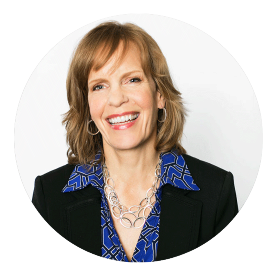5 Strategies to Make Your Charitable Giving Systematic and Purposeful

Hank Dunbar
Charitable & Philanthropic Services Manager
Amy: Hi, I'm Amy Thomas, a strategist here at First Citizens Bank. I'm joined today by Hank Dunbar, our Manager of Philanthropic and Charitable Services. As we near the end of the year, there are several things to consider when you are doing your charitable giving before the end of the year. Just a reminder to everyone, the information you're about to hear are the views and opinions of First Citizens Bank and should be considered for educational purposes only. And Hank, you are a licensed attorney, but you are not acting in that capacity today. The information everyone's about to hear should not be considered tax or legal advice. Please consult a tax professional before making any changes to your financial plan.
So, Hank, there's always a rush at the end of the year, or at least it seems that way for folks to get their charitable giving done. Is that a real rush or is that just something that we're feeling on our side?
Hank: Oh, Amy, it's definitely for real. The end of the year is a popular time to give to charitable organizations, especially for those who are trying to get a tax deduction based on their charitable giving. According to Nonprofit Source, nearly 1/3 of all charitable giving takes place in the month of December. I think this giving rush is somewhat precipitated by tax strategies, but I think another part—and probably a really big part of it—is that we're in the season of Thanksgiving and people are thinking about those who may be less fortunate than they are. And we move straight into the holiday season, and I think it's a time when people just generally have a stronger feeling of goodwill and want to do more for those who don't have.
Making strategic choices about how you can give can help you make the most of your contributions, and it can boost your tax savings. We've put together five strategies that can help individuals take their personal giving to the next level.
The first one is to establish goals. Many people give their resources to a number of different charities, often in response to a direct request from a charity— someone calling your house and saying, "Will you give to the American Red Cross?" Or it's when something moves them in the moment—relief efforts that are underway in another part of the United States or relief efforts that are underway in another part of the world. Forty one percent of charitable givers donate after natural disasters. It seems that when Americans are really put to the test, they really step up to the plate and give more than they're accustomed to giving.
Amy: It sounds like what you're saying is a lot of what you and your team do is encourage people to think about the long term—not necessarily focusing on short-term giving, but thinking about it more strategically.
Hank: Exactly. Identify the causes you care most about. Think about access to education, the arts. Do you want to give money to the museum of art? Do you want to give money to the symphony? Do you want to give money more locally to people in your area who promote the arts? A more grassroots level. Identifying charities that focus on your priorities by talking to your friends or by talking to your family members and then doing some research on your own. We're going to talk about donor-advised funds in a little while and how community foundations help people do research. But if you're interested in doing your own research, go to Charity Navigator or Guide Star. Nonprofits are very public entities, so you can look at a 990 or a 990 PF return on foundations, nonprofit organizations in general, and see how they use the money that's given them.
So once you've identified your favorite causes, the things that you really are passionate about, you want to create a giving plan. Choose one or two charities. Don't try to shotgun in at first, but really give it a focused approach, that align with your values, and consider what you want to achieve when you are working with those charities. Decide how your donations are going to be used. Decide how much you want to contribute, and think about how often you want to give. For example, if you're donating to your alma mater, to the college that you went to, you should talk to the university's advancement office about maybe creating a scholarship endowment. Most institutions have minimum scholarship requirements of about $25,000 to $30,000. So if you're already giving $5,000 a year to your college, think about signing an agreement that says we're going to give $5,000 a year for 5 years, $25,000, and we want that to be for scholarship purposes. We want the spend that generates to be used to help students who are in a particular area of study or are involved in particular activities on campus.
While we might not think that amount generates a really substantial amount for students to use, in the end it does. I think any college student who is pressed for resources will tell you that scholarships are what can really make a huge impact on their education. It also helps them appreciate what other alumni are doing for the institution, and it kind of instills in them an idea that when they have the resources, that they will give back to the institution.
Amy: So, Hank, when you're putting together your strategic plan for giving and thinking about all those things you just mentioned, who should be involved in that conversation when you're starting your plan?
Hank: Other than you, two people essentially: Your financial advisor, the person who helps you understand what your assets are, the nature of your assets and the value of your assets. And the other person is your tax planner, your CPA. You and those two people together form the team that decides how much to give and what to give. They can help you find a level of giving that's appropriate for your circumstances and that you can be comfortable with. And they can also help you plan for the future in other ways. They can help you think about retirement planning. They can help you think about gifts to friends or family members—other organizations that aren't in your top two or three that you want to give to over time.
Amy: So, Hank, we've talked about establishing goals, getting a strategic plan in place and your team. What's the next step?
Hank: Think beyond cash. People think that they can only write a check to an organization, and sometimes writing a check is an appropriate thing. But a lot of times, people who have appreciated assets—stocks, mutual funds, real property, interest in an LLC—are in a better place to give those assets or a part of those assets. It provides an additional tax benefit because oftentimes you are able to avoid capital gains taxes if you sold those. So you keep your cash for yourself and donate appreciated property. You just need to be really careful when you're doing that because sometimes those sorts of gifts are not appropriate for organizations. Sometimes an organization doesn't want to accept them. So it's important that this step, with not just your financial advisor and your tax planner, but to bring in the organization you want to give to. You're going to give to them, it's just not necessarily what you had anticipated giving to them.
Amy: So, Hank, I hear you and your team talk about donor-advised funds pretty regularly. What are they, and how do they fit into a strategy for giving?
Hank: So a donor-advised fund is a fund that is established at a nonprofit organization, typically a community foundation, but there are some national organizations that allow you to make contributions to the organization and create a donor-advised fund. They work well because if you find yourself in a tax crunch at the end of the year and you need to give money away but you don't know who you want to give it to, you can establish a donor-advised fund, make a contribution to it, get your tax deduction for it and then move forward the decision-making process on when the gift is going to be made. Donor-advised funds have much lower startup costs than private foundations. Donor-advised funds can be $25,000 and up. The average donor-advised fund in the United States is about $250,000. And right now, there are over 1 million donor-advised funds in the United States. So a lot of money has been given to donor-advised funds, a lot of money has been moved out of donor-advised funds. You don't have to have annual meetings. You don't have to file a tax return. Once you write that check or transfer that stock to a community foundation to establish a donor-advised fund, you're set to roll.
Amy: So it sounds like, Hank, that donor-advised funds are, work really well for people who know they want to make charitable contributions but they haven't got all the details around it yet.
Hank: Exactly.
Amy: So, Hank, we've talked a little bit about taxes with giving. How have tax laws impacted the way people are giving now?
Hank: Tax reform changes in 2018 increased the standard deduction and capped some itemized deductions, and that made it more challenging for taxpayers to get benefits from their charitable contributions. During the pandemic, there were special laws put into place that made it easier to make a charitable contribution. Again, this is something you really need to have a serious conversation with your tax advisor on. But now, a lot of people find that what they are accustomed to giving every year isn't sufficient to qualify for a deduction above the standard deduction.
So we have talked a lot at First Citizens about bundling, and I know that we're not alone in talking about bundling. Let's say you're already in the habit of giving $5,000 a year to a number of charitable organizations, but that doesn't satisfy the minimums for an itemized deduction. So you want to do more. Well, let's say you have the resources to give $25,000 at one time into a donor-advised fund. So you would do that during a calendar year. You would get the itemized deduction for that $25,000 gift, but you don't have to move the entire $25,000 out at one time. So you put $25,000 in 2022. In 2023, you give $5,000 to the charities you usually give to and in 2024 and so on and so forth you give that $5,000 out. The joy of working with a donor-advised fund—in particular donor-advised funds that are associated with community foundations—is that the community foundation will help you develop a strategy, and you develop a relationship with the community foundation, and over time you get really comfortable with working with them, and the chances are that you're going to continue to give to that donor-advised fund. And the chances are that at your death, you may remember your fund and your estate plan, which makes it even better because then that money can be in a donor-advised fund and your children and your grandchildren can advise on it, or it can become an endowment, and the endowment can generate resources that last in perpetuity and are given out in perpetuity. And you can specify in your document what organizations you want to receive that disbursement or what percentages that you want the organizations to receive. Or you can continue to let your children and your grandchildren advise on it. It enables us to be a part of something great that's going on in the world.
Amy: And you and your team do a wonderful job with it.
Hank: Thank you.
Amy: So, Hank, if you had to sum it up, what are, what's something people should really consider before making their charitable gifts?
Hank: Donors should hopefully be very passionate about the organizations that they are supporting. It's also a great time to engage your children, especially when they're young, in the giving process. That whole concept is just a really good way of establishing a legacy of philanthropy in your family. It's also important that they know that they're giving away resources that you've set aside for charity and that you encourage them to start setting aside something for charity every year.
Amy: Thank you for watching. Thank you, Hank, for being with us today. We hope you found this information helpful as you're thinking about your charitable giving this year. For more information, please visit firstcitizens.com/wealth.
The views expressed are those of the author(s) at the time of writing and are subject to change without notice. First Citizens does not assume any liability for losses that may result from the information in this piece. This is intended for general educational and informational purposes only and should not be viewed as investment advice or recommendation for a security, investment product or personal investment advice.
Your investments in securities, annuities and insurance are not insured by the FDIC or any other federal government agency and may lose value. They are not a deposit or other obligation of, or guaranteed by any bank or bank affiliate and are subject to investment risks, including possible loss of the principal amount invested. Past performance does not guarantee future results.
First Citizens Wealth Management is a registered trademark of First Citizens BancShares, Inc. First Citizens Wealth Management products and services are offered by First-Citizens Bank & Trust Company, Member FDIC; First Citizens Investor Services, Inc., Member FINRA and SIPC an SEC-registered broker-dealer and investment advisor; and First Citizens Asset Management, Inc., an SEC-registered investment advisor.
Brokerage and investment advisory services are offered through First Citizens Investor Services, Inc., Member FINRA and SIPC. First Citizens Asset Management, Inc. provides investment advisory services.
Bank deposit products are offered by First Citizens Bank, Member FDIC.
See more about First Citizens Investor Services, Inc. and our investment professionals at FINRA BrokerCheck.
The end of the year is a particularly popular time for individuals to make contributions to philanthropies of their choice. In addition to benefitting the organization, making charitable contributions can result in a tax deduction for donors.
While giving reactively can serve the purpose for both donor and organization, adding structure to your giving strategy can result in a better outcome for both parties. Set annual donation goals, give throughout the year and utilize other donation structures. These actions will make giving feel less overwhelming and more impactful.
Hear more about the five strategies to consider incorporating into your financial plan in this video.
Insights
A few financial insights for your life

Tax-Loss Harvesting: A Smart Tax Move for Investors

Walt Reed
First Citizens Director of Trust & Estate Tax

Navigating Capital Gains Taxes

Walt Reed
First Citizens Director of Trust & Estate Tax

Understanding employee liquidity options prior to an IPO

Ann Lucchesi
Senior Director
The information provided should not be considered as tax or legal advice. Please consult with your tax advisor.
This material is for informational purposes only and is not intended to be an offer, specific investment strategy, recommendation or solicitation to purchase or sell any security or insurance product, and should not be construed as legal, tax or accounting advice. Please consult with your legal or tax advisor regarding the particular facts and circumstances of your situation prior to making any financial decision. While we believe that the information presented is from reliable sources, we do not represent, warrant or guarantee that it is accurate or complete.
Third parties mentioned are not affiliated with First-Citizens Bank & Trust Company.
Your investments in securities and insurance products and services are not insured by the FDIC or any other federal government agency and may lose value. They are not deposits or other obligations of, or guaranteed by any bank or bank affiliate and are subject to investment risks, including possible loss of the principal amounts invested. There is no guarantee that a strategy will achieve its objective.
About the Entities, Brands and Services Offered: First Citizens Wealth™ (FCW) is a marketing brand of First Citizens BancShares, Inc., a bank holding company. The following affiliates of First Citizens BancShares are the entities through which FCW products are offered. Brokerage products and services are offered through First Citizens Investor Services, Inc. ("FCIS"), a registered broker-dealer, Member FINRA and SIPC. Advisory services are offered through FCIS, First Citizens Asset Management, Inc. and SVB Wealth LLC, all SEC registered investment advisors. Certain brokerage and advisory products and services may not be available from all investment professionals, in all jurisdictions or to all investors. Insurance products and services are offered through FCIS, a licensed insurance agency. Banking, lending, trust products and services, and certain insurance products and services are offered by First-Citizens Bank & Trust Company, Member FDIC, and an Equal Housing Lender, and SVB, a division of First-Citizens Bank & Trust Company. icon: sys-ehl
All loans provided by First-Citizens Bank & Trust Company and Silicon Valley Bank are subject to underwriting, credit and collateral approval. Financing availability may vary by state. Restrictions may apply. All information contained herein is for informational purposes only and no guarantee is expressed or implied. Rates, terms, programs and underwriting policies are subject to change without notice. This is not a commitment to lend. Terms and conditions apply. NMLSR ID 503941
For more information about FCIS, FCAM or SVBW and its investment professionals, click the links below:
FirstCitizens.com/Wealth/Disclosures
SVB.com/Private-Bank/Disclosures/Form-ADV
See more about First Citizens Investor Services, Inc. and our investment professionals at FINRA BrokerCheck.


